Tod Mun Pla, or Thai Fish Cakes, are loaded with the flavors of lemongrass, cilantro, and hot chiles. This recipe uses Thai
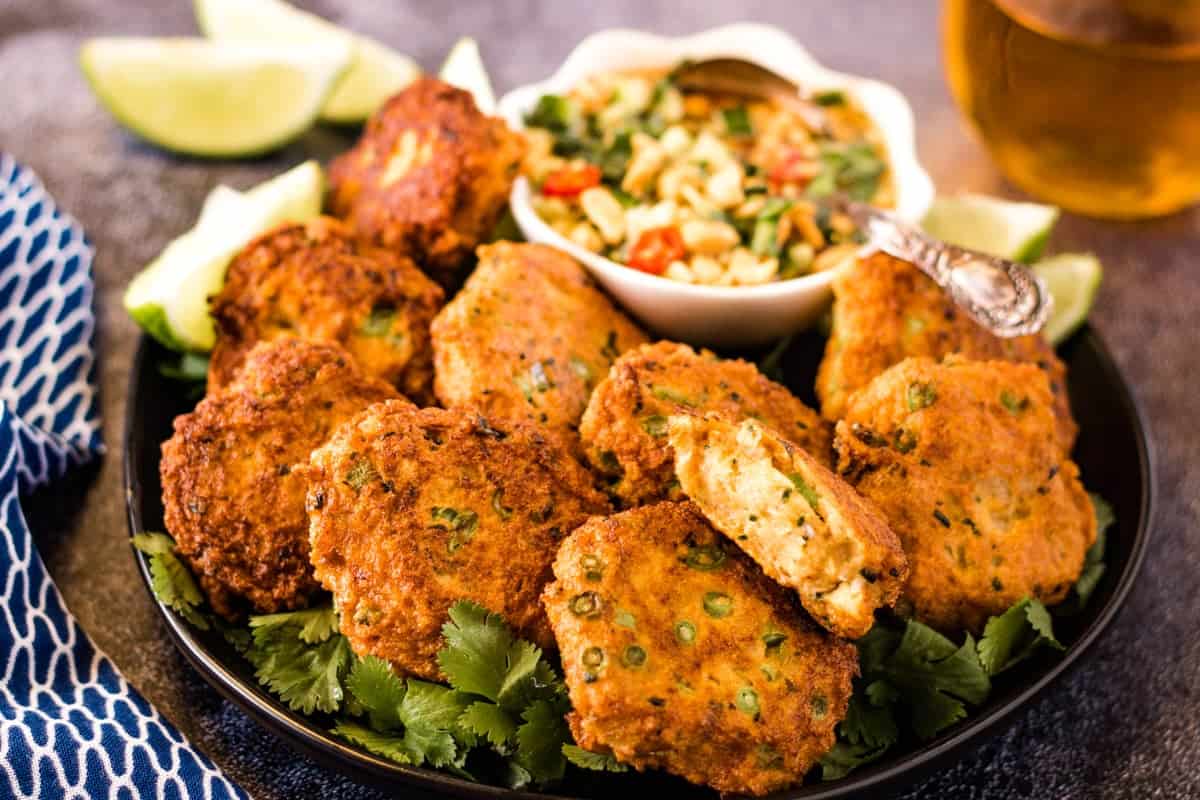
When I eat at Thai restaurants, I always order tod mun pla. The savory Thai fish cakes are intensely flavored with all the Thai ingredients I love—lemongrass, cilantro, chiles, and fish sauce. But one order is never enough!
These Thai fish cakes are easy to make at home and they don’t even require a lot of special ingredients. You can shallow fry them in a regular skillet using just about ½ cup of oil rather than deep-frying them.
What do Thai fish cakes taste like?
Tod Mun Pla are made with mild white fish that is ground to a paste along with seasonings including Thai curry paste, cilantro, and fish sauce. They are usually also studded with thinly sliced green beans for a bit of textural contrast.
The
If you love the flavors of Thai curries, you will love this easy Thai fish cakes recipe!
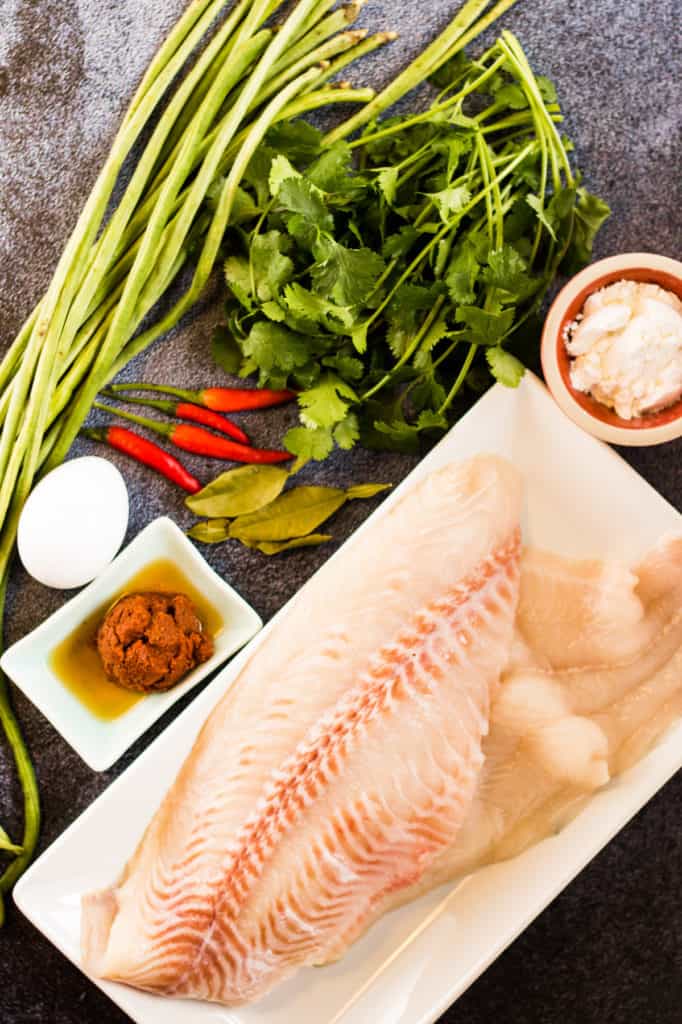
What ingredients do you need?
A lot of Thai cooking requires long lists of ingredients, but not this easy recipe! Here’s what you need:
- White fish (cod, catfish, haddock, pollock, grouper, snapper, etc.)
- Cilantro
- Thai
curry paste (red or green) - Egg white
- Makrut lime leaves (these are optional)
- Fish sauce
- Brown sugar (or palm sugar)
- Cornstarch
- Chinese long beans or green beans, such as blue lake beans
- Cooking oil
How do you make them?
This tod mun pla recipe is surprisingly easy to make. Here are the steps:
- In a food processor, combine the fish, cilantro, curry paste, lime leaves (optional), fish sauce, and sugar and pulse to purée the mixture into a sticky paste.
- Add a little cornstarch and pulse to incorporate.
- Stir in the sliced green beans.
- Heat about ½-inch of oil in a skillet over medium-high heat.
- Form the paste into patties about 2 ½ to 3 inches across and about ½-inch thick.
- Fry the patties for a minute or two on each side, until crisp and deep golden brown.
- Drain on a paper towel-lined plate and serve hot with Prik Nam Pla or Sweet Thai Chili Dipping Sauce.
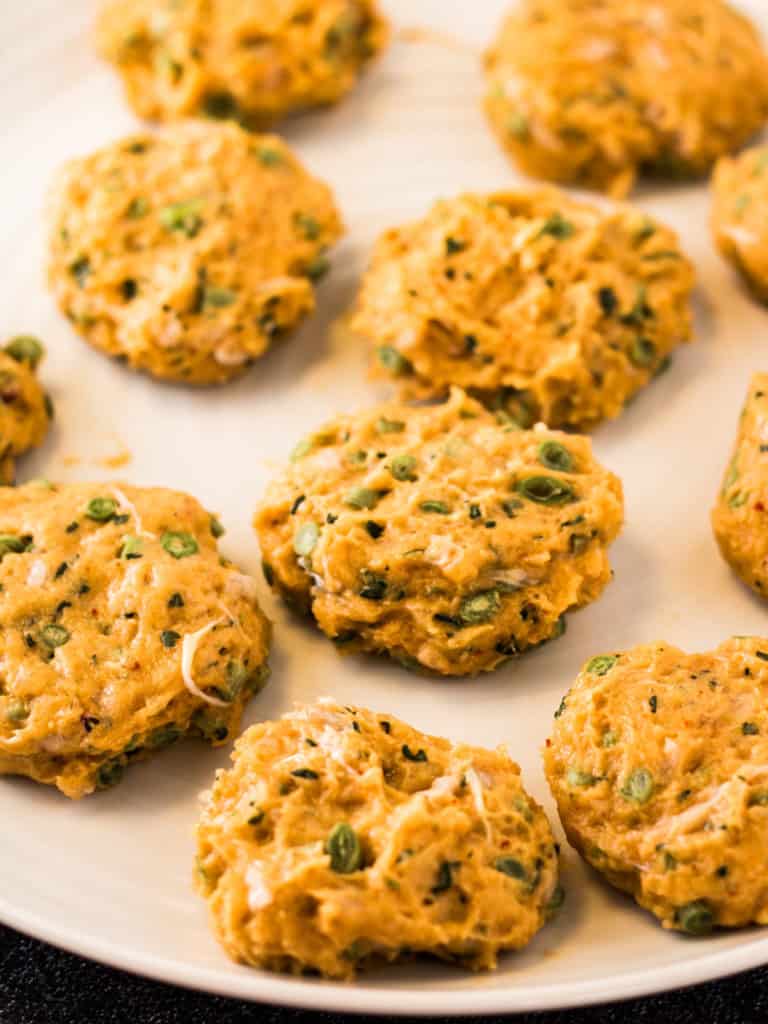
Tod Mun pla frequently asked questions
Cooks in Thailand use a specific type of starchy fish to make these fish cakes. The fish is beaten with wooden sticks to release the starch and give the fish cakes their classic springy texture. That type of fish isn’t available in the US, though. You can use any white fish as a substitute. I like to use catfish. You can also use tilapia, snapper, or cod. To create a similar springy texture to the authentic recipe, grind the fish to a paste in a food processor, adding an egg white.
In restaurants, you’ll usually see Tod Mun Pla or fish cakes as an appetizer. But when I make them at home, we usually have them as an entrée for dinner.
I offer Prik Nam Pla or a Sweet Thai Chili Dipping Sauce or store-bought Sweet Chili Sauce alongside, as well as steamed rice or sticky rice and a simple vegetable. In my house, more often than not, this means steamed broccoli.
The fish cakes are so flavorful that simple sides are all you need.
About Thai curry paste
Thai
There are many different types of Thai
Red

Green
Yellow
What are the best brands of Thai curry paste ?
If you have an Asian market nearby, you’ll probably find many choices of Thai curry pastes there. Two of the most common brands are Mae Ploy and Maesri.
Mae Ploy curry pastes come in a plastic tub, making it easy to tuck what you don’t use into your refrigerator for use in other recipes.
Maesri curry pastes come in cans, so you’ll have to transfer any extra to a jar or tub that is suitable for refrigerator storing.
I personally love Mae Ploy curry pastes because I find the packaging convenient and the flavors bright, spicy, and delicious. Both Mae Ploy and Maesri are good quality products that will deliver tons of flavor to your Thai cooking.
If you don’t have an Asian market nearby, you can still likely find Thai

What are makrut lime leaves?
Most Thai curry pastes that you can buy have makrut lime peel (often called kaffir lime peel, see below) in them. Many Thai recipes also call for makrut lime leaves. So what are they?
Makrut limes look like very bumpy limes. They are used for their zest or peels and the leaves of the tree are used as an herb in many Southeast Asian cuisines, similar to the way bay leaves are used in other cuisines.
The distinctive flavor of both the peel and zest is a common element in many Southeast Asian dishes. The flavor is bright and citrus-y. It also has a floral element that distinguishes it from the limes and lemons we are used to in the west.
The whole leaves can be purchased fresh or frozen. They can be tough to find in US markets, though, so whenever I see them, I buy a bunch and stock up.
I store the fresh ones in resealable plastic bags in the refrigerator (they last forever) or buy them frozen and keep them in the freezer.
You can also grow makrut limes in your own garden. Here in California, citrus is easy to grow and makrut lime trees are no different. The leaves can be harvested and used year-round.
Why are they sometimes called makrut limes and sometimes called kaffir limes?
For years, most recipe developers and writers in the West referred to this fruit as “kaffir lime.” Now it is becoming more common to call it “makrut lime.” It turns out that “kaffir” is a highly offensive racial slur in some parts of the world, so it’s time to stop using it.
According to an article on slate.com, “The Arabic word kafir was originally used to refer to non-Muslims, but over the centuries it was adopted by white colonialists to describe black Africans.”
Slate goes on to say that “By the 20th century, kaffir was widely understood to be a slur, and its power to insult and offend only grew in apartheid-era South Africa.”
Some have theorized that the name was used for this “ugly” fruit as an unfavorable comparison to black people.
But there is also an ethnic group in Sri Lanka known as Kaffir. And the name was used to refer to limes found in Sri Lanka in the late 19th century.
So the question is, is the name kaffir lime derived from the racial slur, or is the fruit named after Sri Lankan Kaffirs?
We’ll probably never know the answer. But because the word “kaffir” is offensive to some, we should all simply stop using it.
In Southeast Asia, the fruit is generally known by its proper name, Makrut lime, so let’s just call it that from now on!

More Thai recipes you’ll love

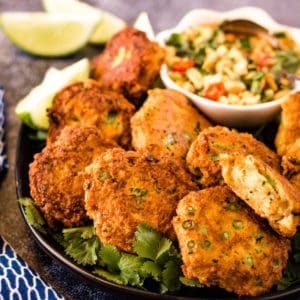
Thai Fish Cakes
Ingredients
- 1 pound white fish fillet cut into several pieces
- ¼ cup cilantro plus additional for serving
- 1 to 3 tablespoons red or green curry paste see note
- 1 egg white
- 4 makrut lime leaves finely chopped
- 1 tablespoon fish sauce
- 1 tablespoon brown sugar
- 2 tablespoons cornstarch
- 1/4 cup thinly sliced Chinese long beans or sub green beans
- ½ cup cooking oil or enough to fill your skillet about ½-inch deep
- Lime wedges for serving
Instructions
- In a food processor, combine the fish, curry paste, egg white, fish sauce, and sugar and pulse until the mixture forms a thick paste. Add the cornstarch and pulse until it is well incorporated. Transfer the mixture to a bowl and stir in the sliced beans.
- Heat the oil in a medium, heavy-bottomed skillet over medium-high heat, until it shimmers.
- Form the fish mixture into balls a little larger than golf balls and then flatten them into ½-inch-thick patties.
- Add the patties to the skillet, 3 or 4 at a time. Cook for 1 to 2 minutes per side, until deep golden brown. Transfer the cooked patties to a paper towel-lined plate to drain. Repeat until all of the patties have been formed and fried.
- Serve hot with lime wedges, cilantro, and Sweet Thai Chili Dipping Sauce, if desired.
Notes
Nutrition




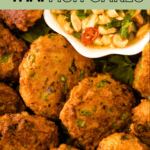
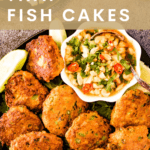


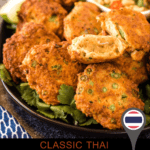

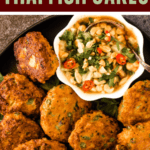



I tried making Tod Mun Pla Thai Fish Cakes for the first time and my roommate was obsessed. The lemongrass and chiles gave them a great kick. A new go-to recipe and I’ll be making these regularly!
Me and my partner decided to make Tod Mun Pla for dinner, and it was so fantastic! Shallow frying was quick and hassle-free. We would love to share this recipe with our friends!
These were so delicious! I served them with some sticky rice and a side of broccoli and it made a really filling meal. Thanks for the recipe!
These fish cakes are so easy to make and taste really yum! The Thai curry paste is my favorite and I love that I didn’t have to go looking for “exotic” ingredients haha. I also added a pinch more cilantro and a squeeze of lime to the dipping sauce. It turned out really amazing.
I love Thai food and making these at home gave me serious restaurant vibes. The hot chiles added heat but it wasn’t overpowering and the green beans gave it a nice crunch. But the dipping sauce is the star of the show for me! I can definitely dip anything in this!